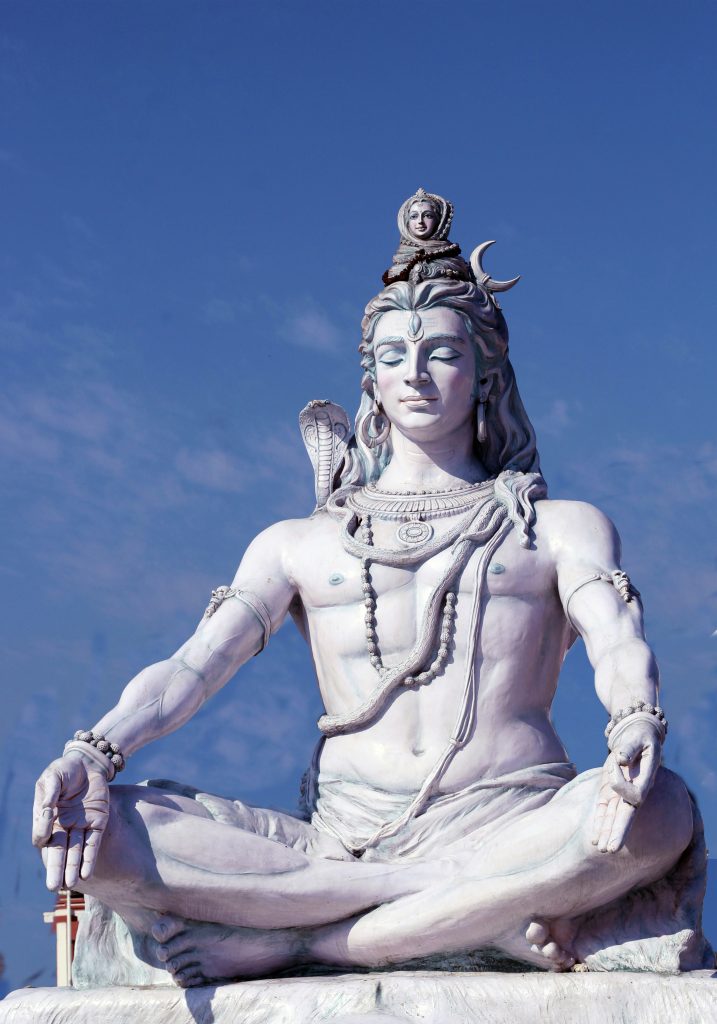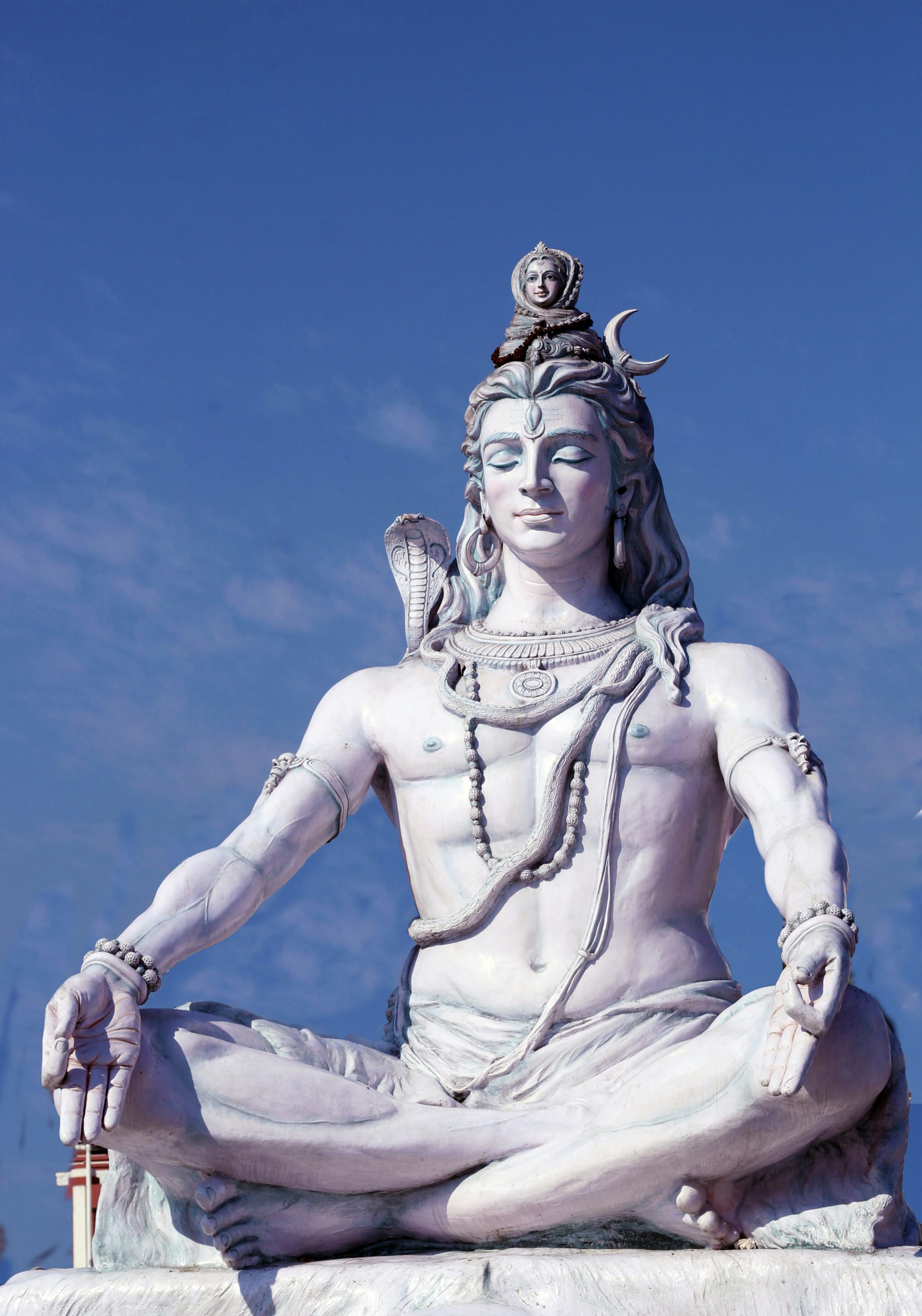Shiva, one of the principal deities in Hinduism, is a complex and multifaceted figure who embodies both creation and destruction, asceticism and sensuality, and benevolence and ferocity. Known as “The Transformer” in the Holy Trinity (Trimurti) of Hinduism, alongside Brahma (The Creator) and Vishnu (The Preserver), Shiva plays a pivotal role in the cosmic cycle of creation, preservation, and dissolution. This article delves into the significance, symbolism, and worship of Lord Shiva, offering a comprehensive understanding of this revered god.
Who is Shiva?
Shiva, often referred to as Mahadeva (Great God) or Bholenath (Lord of Simplicity), is one of the most worshipped deities in Hinduism. He is both a destroyer and a regenerator, symbolizing the cyclical nature of existence. While his role as “The Transformer” might seem ominous, it is essential to understand that destruction in Hinduism is not negative—it paves the way for renewal and rebirth.
Shiva is also known as the god of meditation, yoga, and the arts. He is often depicted as an ascetic yogi, deep in meditation on Mount Kailash, his abode in the Himalayas. At the same time, he is a loving family man, married to Goddess Parvati, and the father of Lord Ganesha and Lord Kartikeya.
Symbolism and Iconography
Shiva’s iconography is rich with symbolism, each element representing profound spiritual truths:
- Third Eye: Shiva’s third eye on his forehead symbolizes wisdom, insight, and the destruction of ignorance and evil. When opened, it is said to unleash immense power.
- Crescent Moon: The crescent moon adorning his head represents the cyclical nature of time and the mind’s control over the senses.
- Ganga: The river Ganga flowing from his hair signifies the purification of the soul and the removal of ego.
- Snake Around His Neck: The serpent around his neck represents the control over fear and death, as well as the Kundalini energy in yoga.
- Trishul (Trident): The trident symbolizes the three fundamental aspects of existence—creation, preservation, and destruction.
- Damru (Drum): The small drum in his hand represents the sound of creation and the rhythm of the universe.
- Ashes on His Body: The ashes smeared on his body symbolize the transient nature of life and the ultimate reality of death.
Forms and Avatars of Shiva
Shiva manifests in various forms, each representing different aspects of his divine nature:
- Nataraja (Lord of Dance): Depicted as a cosmic dancer, Nataraja symbolizes the eternal cycle of creation and destruction through his dance, known as Tandava.
- Ardhanarishvara: This androgynous form, half-male and half-female, represents the unity of opposites and the balance between masculine and feminine energies.
- Rudra: The fierce form of Shiva, associated with storms, hunting, and wild nature, symbolizing his destructive power.
- Pashupati: The “Lord of Beasts,” representing his connection to animals and nature.
- Mahayogi: The supreme ascetic, meditating in the Himalayas, embodying self-discipline and spiritual enlightenment.
Worship of Shiva

Shiva is worshipped in various forms across India and beyond. Some of the most popular ways to venerate him include:
- Shiva Lingam: The Shiva Lingam, a symbolic representation of Shiva, is worshipped as a manifestation of his infinite nature. It represents the union of masculine and feminine energies.
- Maha Shivaratri: The “Great Night of Shiva” is one of the most significant festivals dedicated to Shiva. Devotees fast, meditate, and offer prayers throughout the night to seek his blessings.
- Om Namah Shivaya: This sacred mantra is chanted to invoke Shiva’s presence and seek his protection and guidance.
- Abhishekam: The ritual bathing of the Shiva Lingam with milk, honey, water, and other offerings symbolizes purification and devotion.
- Temples: Some of the most famous Shiva temples include the Kashi Vishwanath Temple in Varanasi, Kedarnath Temple in the Himalayas, and Meenakshi Temple in Madurai.
Shiva in Modern Culture
Shiva’s influence extends beyond religion into art, literature, and popular culture. He is a recurring figure in Indian classical dance, music, and poetry. In recent years, his image and symbolism have also found a place in global spirituality, yoga, and meditation practices.
Conclusion
Shiva is much more than a god of destruction—he is a symbol of transformation, balance, and the eternal cycle of life. His teachings encourage us to embrace change, let go of attachments, and seek higher truths. Whether through meditation, worship, or simply understanding his symbolism, Shiva offers a path to spiritual growth and self-realization.
For millions of devotees, Shiva is not just a deity but a way of life—a reminder that destruction is a necessary step toward renewal and that true wisdom lies in transcending the material world.
Photo by Baatcheet Films on Unsplash


Leave a Reply